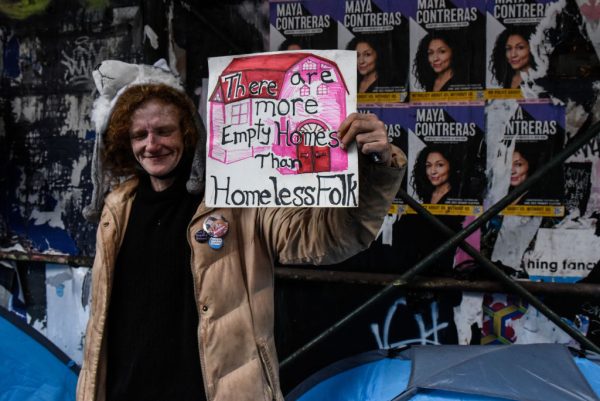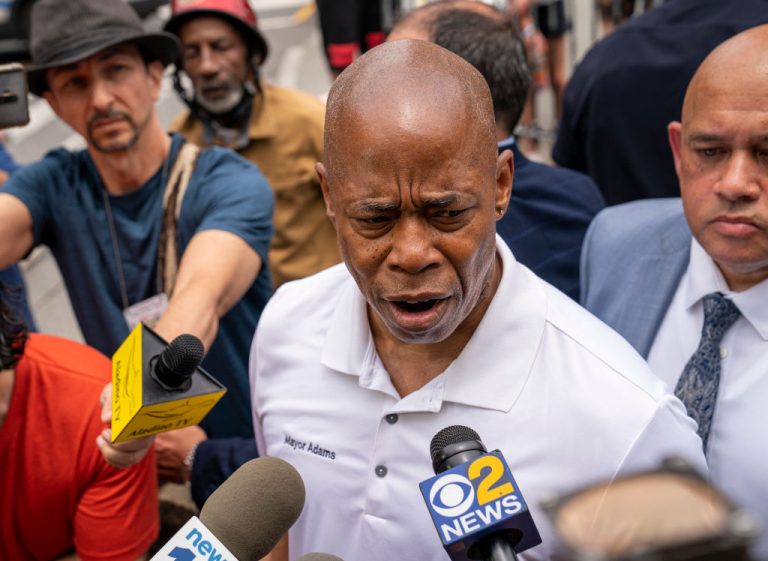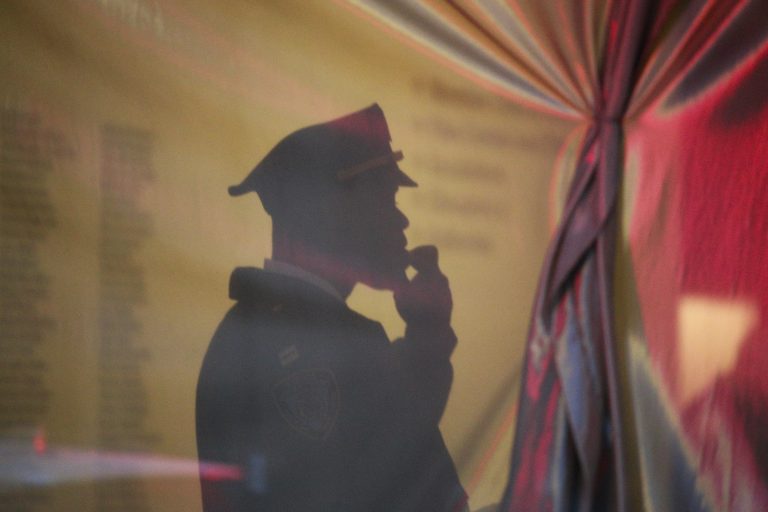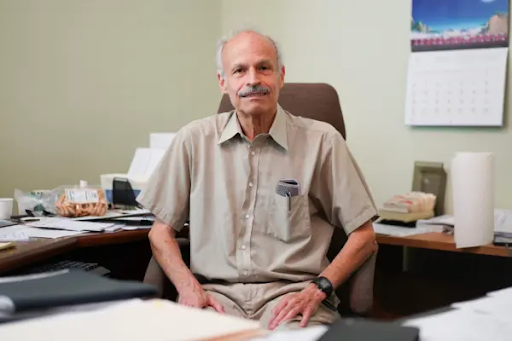On June 14, New York City Mayor Eric Adams, during a rooftop press conference in Brooklyn, announced his administration’s plan to tackle New York’s housing crisis, promising to boost development of affordable apartments, improve public housing conditions and to help people experiencing homelessness to get off the streets.
“Housing has been a crisis in New York City for too long. Too many New Yorkers are experiencing homelessness, living in poor quality housing, or struggling to keep up with housing costs,” the executive summary of his plan reads.
In his plan, entitled “Housing Our Neighbors: A Blueprint for Housing and Homelessness,” Adams said that his plan will employ strategies that have been deliberated on for “generations” however “quite a few of these ideas have never been tried before.”
Adams said that for decades the city has set “ambitious targets” for the construction of new subsidized housing, however despite these efforts one-third of New Yorkers spend over half of their income on housing and currently thousands of children wake up in the morning in a shelter bed.
A “critical tool” in his arsenal is the construction of new homes with below market rents; however, Adams conceded that if this alone was the key to solving the housing crisis, then efforts to date would have been adequate.
Success
You are now signed up for our newsletter
Success
Check your email to complete sign up
“We can do better,” he said, while promising to “slice through the red tape and dysfunction that keeps too many apartments empty and too many potential homes for New Yorkers as vacant lots.”
In a letter, penned by New York’s Chief Housing Officer, Jessica Katz, she said “We must treat our city’s housing and homelessness crisis with the urgency it deserves and ensure that all our neighbors have a safe, stable, affordable place to live in the greatest city in the world,” while promising to be transparent about the state of homelessness in the city and to build more housing “citywide.”
READ MORE:
- New Yorkers Pessimistic About City’s Future, Majority Believe Leadership Needs to Do Better: New Poll
- NYC Sanitation Commission Announces Recruitment Exams Are Now Open for Registration
- NY: Citing Increased Gun Violence, Mayor Adams Urges Congress to Crack Down on Guns
Measurable goals lacking
At the rooftop press conference, prior to any questions being asked, Adams addressed the crowd saying, “It’s often asked, ‘How many units you going to build? How many units you going to build? How many units are you going to build?’ If that is one of the on-topic questions you’re going to ask me, don’t because I’m not answering that,” the New York Times reported.
Adams said that instead of playing a “numbers game” that his administration, including housing officer Jessica Katz, will instead focus on bolstering the underlying structures for increasing housing access.
According to the plan, “bolstering the underlying structures” includes creating and implementing new zoning laws and incentives for developers while devising more subsidies for private homeownership.
Adams acknowledged that this approach is a “difficult task” and a “huge undertaking.”
“We are not going to always get it right,” he said.
Removing bureaucratic barriers is a highlight of the plan. His plan includes eliminating a rule that used to mandate that homeless people must stay in a shelter for four months before being able to transition into supportive housing.
The mayor’s plan also speeds up the development of approximately 15,000 supportive housing units, moving their completion date up from 2030 to 2028.

Funding falls short of what was promised
Adams’ plan came one day after the City Council adopted a municipal government budget.
Last year, while on the campaign trail, Adams promised $4 billion in funding to tackle New York’s housing crisis however the municipal budget only earmarked $2.5 billion for various initiatives.
The Legal Aid Society (LAS), which advocates for and defends tenants in court, urged Adams to make good on his initial funding promise while saying the plan is a step in the right direction toward slashing red tape.
In a written statement the LAS said, “But red tape is only a portion of the problem, and homeless New Yorkers, along with low-income households, need genuine access to safe, long-term and affordable housing. This is the only real solution to our city’s sprawling housing crisis, and we call on City Hall to continue to dedicate capital dollars to fund truly affordable housing development throughout the boroughs.”
Assisting Adams’ push to overhaul the New York City Housing Authority (NYCHA) is a state bill, approved by the legislature this year, that creates a trust that could potentially unlock billions of dollars in funding for capital needs in the housing system.
Adams’ plan also creates a way for tenants of the NYCHA to more easily schedule repairs.
Homelessness advocate speaks up
Adams said that his plan was unique because it was developed with input from people who have experienced homelessness and living in New York’s shelters.
In attendance at the press conference was housing advocate Shams DaBaron, who personally experienced what it was like to be homeless in the Big Apple.
“Under the previous administration, we were yelling outside of City Hall. Under Mayor Adams, we’ve been allowed inside City Hall, not to be a prop for the press or for any photo-ops. It was New Yorkers helping to craft a housing plan with the administration,” DaBaron said according to the NY Daily News.
Adams has faced criticism for his approach in clearing homeless encampments across the city with activists and progressive Democrats characterizing his sweeps of homeless encampments as overly aggressive and inhumane.
Adams defended his crackdown saying, “Tell them to come join us on the streets because we are on the streets. We’re not sitting back in a classroom with philosophical theory.”















